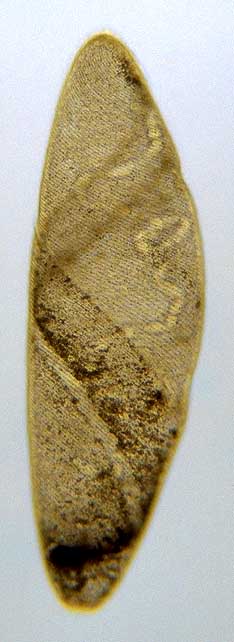
One of the remarkable things of Spirostomum is the way it can contract. The organism can contract it's body to 1/4 of it's length in 6-8 millisec which is the fastest contraction known in any living cell. When observing the creature under the microscope it is easy to watch the contraction by gently touching the sample.
Like many large single celled organisms (giant amoebas, or Stentor: the trumpet animalcule) it has not one nucleus but many. The nucleii form a long strand, like a string of pearls, visible as the lighter structure in the right image.
Spirostomum, like many cilates, feeds on bacteria. They are swept into the mouth opening with a row of specialized fused cilia. The mouth opening is very small and can be found on the side of the body.